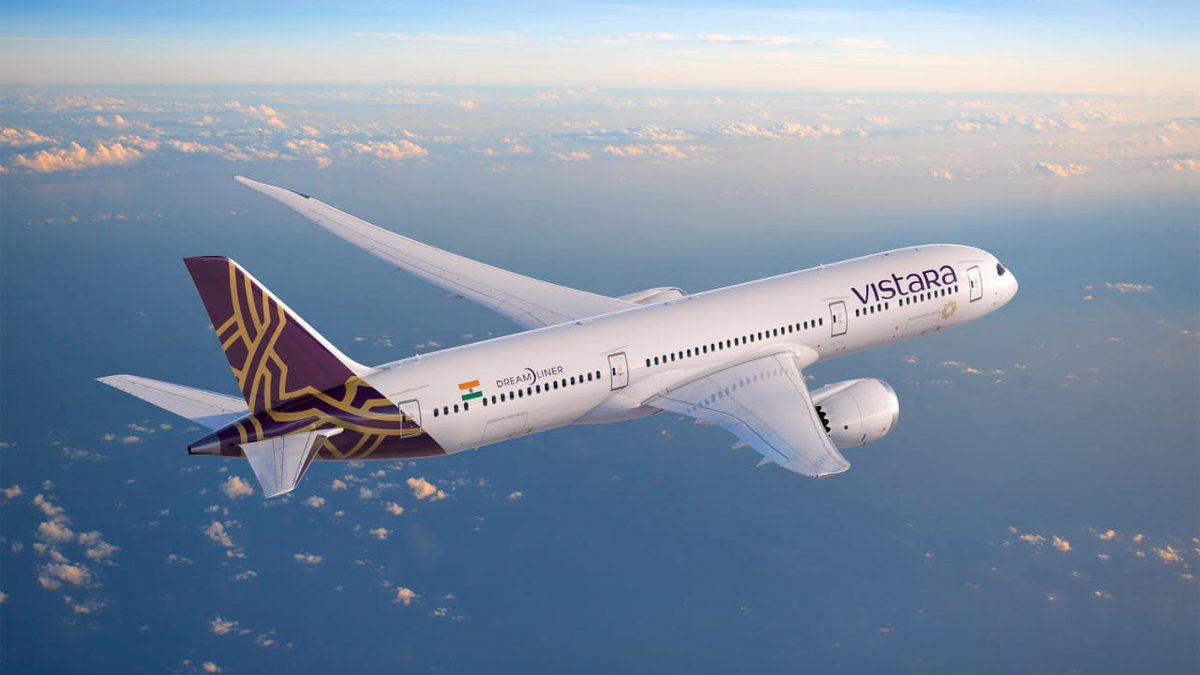Vistara pushes back Boeing 787, Airbus A320neo deliveries to 2022
Singapore Airlines’ Indian joint venture confirms delivery delays for both its single-aisle and twin-aisle jet programs.

Singapore Airlines’ Indian joint venture expects the last four Dreamliners from its Boeing order to arrive by October 2022, a delay of up to seven months as the U.S. planemaker addresses flaws with the jet and the pandemic weighs on air travel.
Vistara, which Singapore Airlines jointly owns with conglomerate Tata Group, has received two Boeing 787 Dreamliners and will get the four others on order in 12 to 15 months, Chief Commercial Officer Vinod Kannan said in an interview this week. Vistara previously said it would receive all six by March next year.
Boeing’s Dreamliner program has been disrupted by the discovery of defects in the fuselage and nose, leading to a halt in deliveries for much of the past 10 months. Restarting those is crucial for the Chicago-based company, which has about 100 of the jets in storage and burned through about $20 billion last year.
Vistara is also in talks with Airbus about its order of 13 A320neo-family of jets and is negotiating with manufacturers and lessors to see if they can reduce costs or make changes to payment timetables, according to Kannan.
“We are spacing out our deliveries and pushing some to next year,” he said. “There have been commercial discussions to see how we can better match delivery stream to the projected demand.”
A Boeing spokeswoman said the company doesn’t comment on conversations with customers. An Airbus spokesman said the company is in constant dialog with all customers, the details of which remain confidential.
Kannan said Vistara is on track to have a fleet of 70 aircraft by 2023, though it received five or six fewer jets in the 2021 financial year than initially planned. The current 48-strong fleet includes 37 Airbus A320s and three A321neos.
Home market hit by Covid
Vistara’s home market of India has been hit particularly hard by Covid-19, with about 420,000 deaths and over 31 million cases officially, though the actual numbers could be significantly worse.
Away from the devastating human toll, the airline industry has struggled as countries shut their borders and passenger flights were suspended. Domestically, carriers are limited to operating at 65% of pre-pandemic capacity.
Vistara, which hasn’t made a profit since it began as a full-service carrier in 2015, is operating flights to eight international destinations including London, Frankfurt and Tokyo under reciprocal travel agreements or ‘bubbles’ that allow mostly repatriation flights for eligible passengers. The airline is operating at about 60% of pre-pandemic capacity domestically, Kannan said.
Direct flights more appealing
Down the line, there’s an opportunity to tap long-haul demand as Vistara can fly direct from India, while foreign airlines must fly to their home hubs before continuing on to another destination.
That may be beneficial as travelers look to avoid stopovers and more Covid-related requirements, potentially enabling Vistara to put pressure on Emirates and Etihad Airways, which dominate westbound travel from India.
“Once we come out of the pandemic, say in the next 12 to 24 months, the expectation is that people will still be cautious, they might not want to go via a third country,” Kannan said.
“That gives us confidence because India is a huge market, and if you look at many of the long-haul destinations, there were a lot of passengers flying through other hubs, be it the Middle East or Europe.”
With plans to add more non-stop services to Europe and the U.S. in the coming months, Vistara is considering installing a specialized resting area for crew on its 787-9 Dreamliners on order, or taking jets with those spaces already fitted on lease.
“The current aircraft aren’t equipped with crew bunks required for cabin crew and for pilots to have horizontal rest,” Kannan said. “There are aircraft available if we want to lease them with these specifications already built in.”
This article is published under license from Bloomberg Media: the original article can be viewed here
